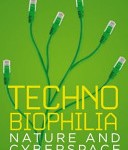Joe Flintham (Media School) and Andy Pulman (Health and Social Care) recently received funding of £2000 from the Research Development Fund to help push forward with a project called ‘The Haunter’. This collaborative work with Tim Wright (digital writer and Visiting Fellow in the Media School) is an experimental narrative piece which brings together site-specific stories, walks in landscapes and homebrew electronics, in order to explore Thomas Hardy’s poetry.

The Haunter is a live event in which participants are tasked with carrying a haunted box around a prescribed route in the environs of Dorchester. At key points, the box, rumoured to be the same one which contained Thomas Hardy’s heart before it was interred at the graveyard at Stinsford, recites poetry written by Hardy following the death of his first wife Emma. The walkers’ journey through poetry and landscape leads them to encounter feelings of grief and absence, to unveil abandoned dreams and stories ended, and perhaps to reflect on lost or neglected love in their own lives.
In the immediate experience, the walk explores themes of bereavement and regret, and the interplay of places and memories, but it is also an experiment in new hybrid forms of narrative: the experience created by ‘The Haunter’ draws on new opportunities offered by site-specific media and the role that place and environment can play in the telling of a story; social and participatory dramatic experiences in which audiences play an embodied role in the enactment of a story; and the affective possibilities opened up by the interaction with physical objects.
In order to make these narrative explorations possible, a further hidden layer of experimentation is necessary: to build hybrid objects which are at once familiar and humane (such as hand-crafted wooden boxes) and at the same time, smart and technologically equipped (context-aware and digital-media capable). In order to deliver the experience of The Haunter, it has been necessary to develop custom electronic devices crossed with antique knick-knacks. This harnesses the smarts available in the newest mobile phones, but wraps their powers into a century-old world of caskets and poems, sea-side courtship memories and tracks through Hardy’s Wessex.
The result is a participatory narrative whose writing, delivery and design is built with the necessary openness to collaboration and experimentation: the walkers encounter not only the box and its poetry, but also landscape, weather, and each other; the writers of the story must interweave the given words of the poems and the medium-specific affordances of phsyical devices with the vagaries of walker behaviour; and the makers must match the predetermined world of system code and electronic hardware capacities with the richly unpredictable world of human behaviour and narrative imagination.

The RDF funding has facilitated the development of a prototype and specifications for a device that can be used to deliver site-specific media experiences that are applicable in a variety of settings such as heritage projects, health-walking and locative story-telling. The funding has also made it possible to allow students to learn the kinds of disciplines involved – physical computing, GPS systems and electronics, etc. Finally, we are currently exploring opportunities with potential partners who can support us developing the project further.
More information:
Tim Wright – Location-based Storytelling
Andy Pulman – Health Walking
Joe Flintham – Hauntology
 NRG Future Foresight Workshop with Sue Thomas
NRG Future Foresight Workshop with Sue Thomas










 Fourth INRC Symposium: From Clinical Applications to Neuro-Inspired Computation
Fourth INRC Symposium: From Clinical Applications to Neuro-Inspired Computation Writing policy briefs
Writing policy briefs Upholding Excellence: The Concordat to Support Research Integrity
Upholding Excellence: The Concordat to Support Research Integrity Today’s Documentation Will Serve Tomorrow’s Justice
Today’s Documentation Will Serve Tomorrow’s Justice ECR Funding Open Call: Research Culture & Community Grant – Application Deadline Friday 12 December
ECR Funding Open Call: Research Culture & Community Grant – Application Deadline Friday 12 December MSCA Postdoctoral Fellowships 2025 Call
MSCA Postdoctoral Fellowships 2025 Call ERC Advanced Grant 2025 Webinar
ERC Advanced Grant 2025 Webinar Horizon Europe Work Programme 2025 Published
Horizon Europe Work Programme 2025 Published Horizon Europe 2025 Work Programme pre-Published
Horizon Europe 2025 Work Programme pre-Published Update on UKRO services
Update on UKRO services European research project exploring use of ‘virtual twins’ to better manage metabolic associated fatty liver disease
European research project exploring use of ‘virtual twins’ to better manage metabolic associated fatty liver disease
One Response to “The Haunter”